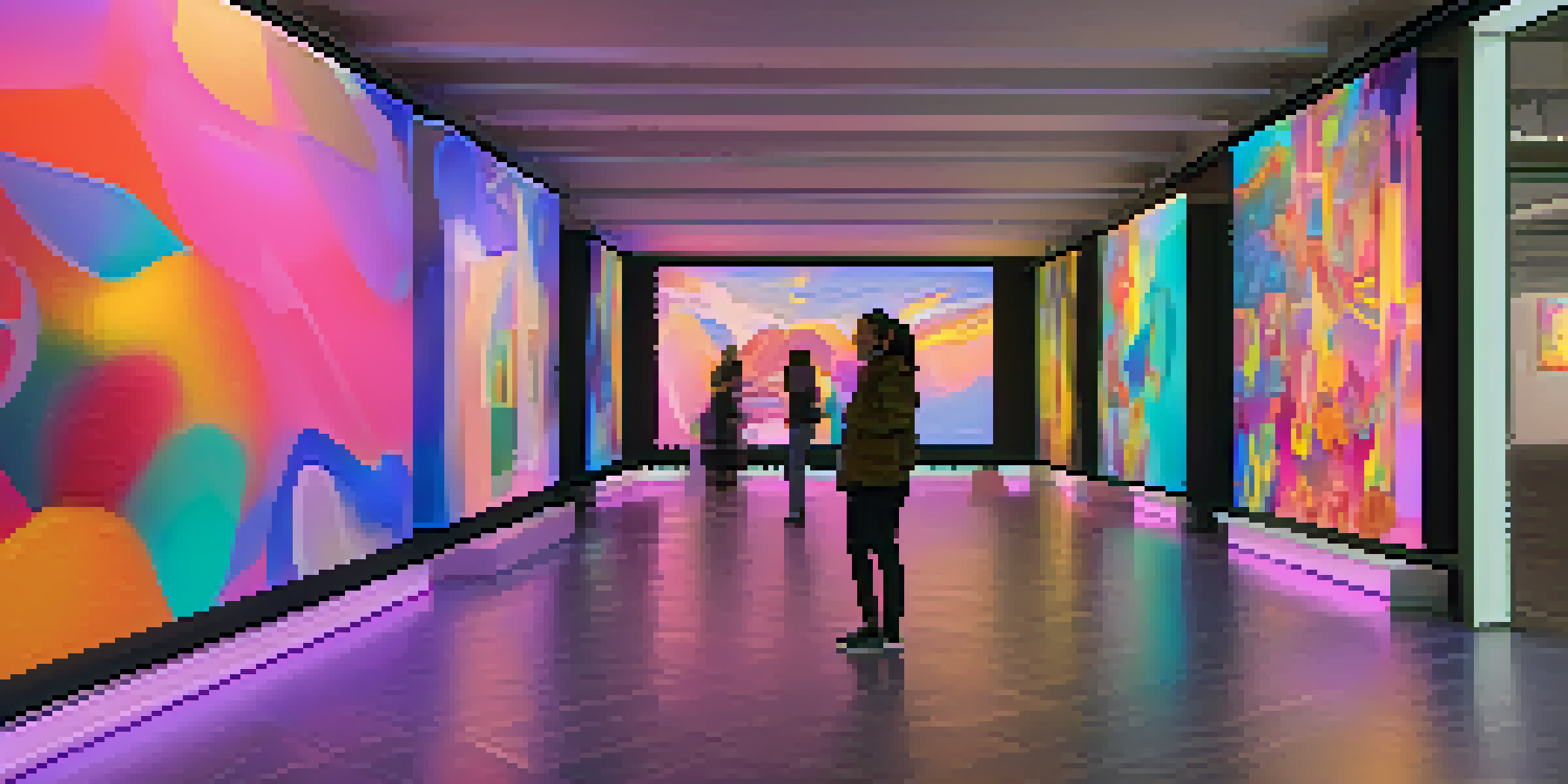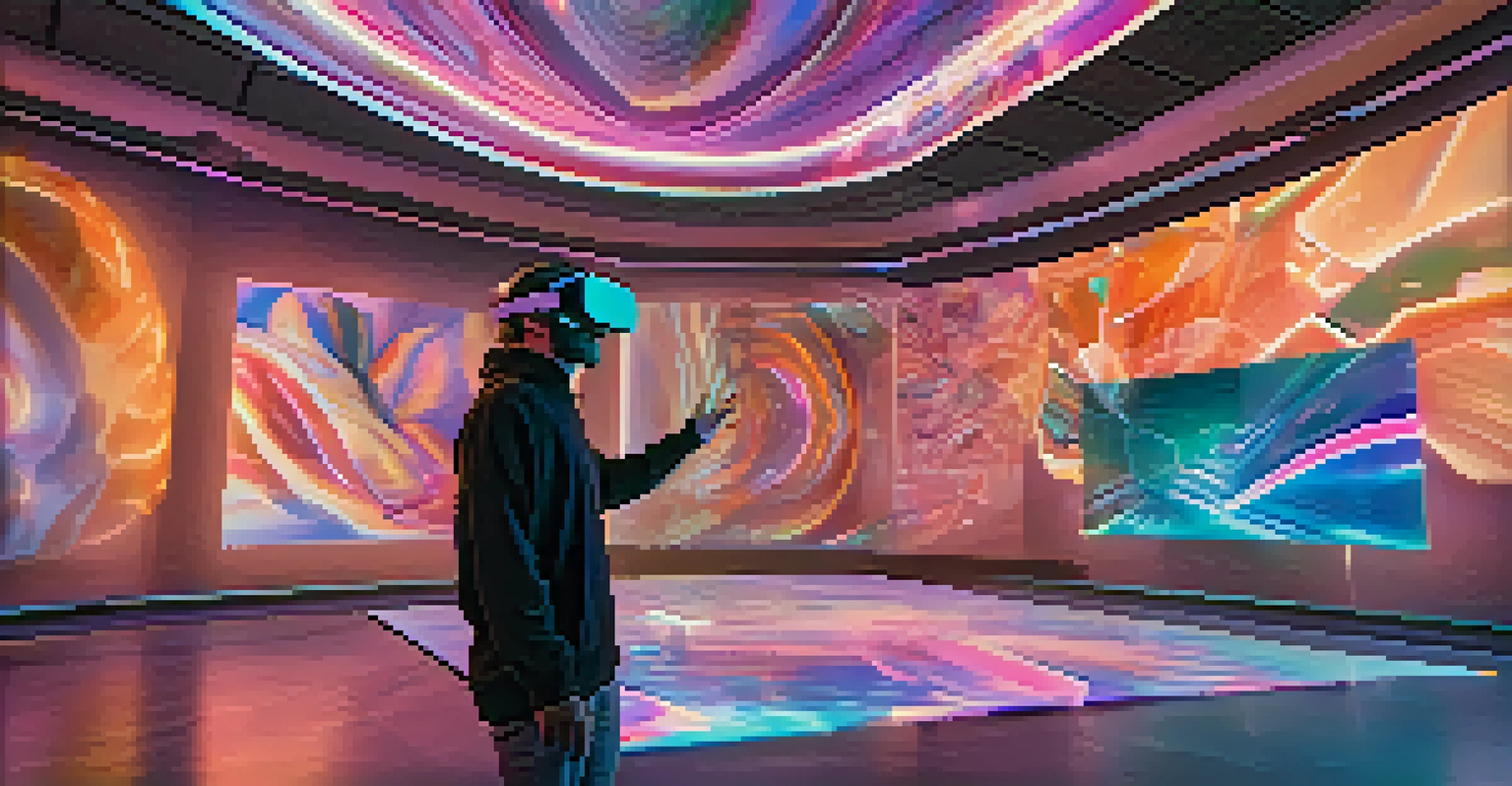NFTs in Art: Bridging the Gap Between Artists and Collectors

Understanding NFTs: A New Frontier in Art Ownership
NFTs, or Non-Fungible Tokens, are unique digital assets verified using blockchain technology. Unlike traditional art, which can be replicated, NFTs provide a way to own a one-of-a-kind piece of digital artwork. This uniqueness is what makes NFTs particularly appealing to collectors, as it ensures authenticity and provenance.
Art is not freedom from discipline, but disciplined freedom.
Imagine having a signed limited edition print of your favorite artwork—it's rare and valuable, right? NFTs operate on a similar principle, but in the digital realm. When you buy an NFT, you're purchasing a digital certificate of ownership, ensuring that your piece is the only one of its kind available.
This shift opens up new possibilities for artists, allowing them to reach a global audience without the barriers of traditional galleries. Their work can be sold directly to collectors, creating a more personal connection between the two parties.
How NFTs Empower Artists in the Digital Age
One of the most significant advantages of NFTs for artists is the ability to retain royalties on secondary sales. This means that every time their artwork is resold, they earn a percentage of that sale. This is a game-changer, as traditional art sales often leave artists with little to no compensation once their work is sold.

Consider an artist who creates a stunning digital painting and sells it as an NFT. If that painting later sells for a higher price, the artist benefits financially from that increase, unlike in the past where they would see no further earnings. This ongoing revenue stream encourages artists to create more and invest in their craft.
NFTs Redefine Art Ownership
NFTs provide a unique digital ownership experience, ensuring authenticity and provenance for collectors.
Moreover, NFTs allow artists to experiment with new forms of expression, such as digital animations or interactive installations, which can enhance their visibility in the art world. As a result, artists are not only expanding their portfolios but also redefining what art can be.
The Collector's Perspective: Why NFTs are Attractive
For collectors, NFTs offer a unique opportunity to own a piece of digital history. Just like collecting rare stamps or vintage vinyl records, owning an NFT provides a sense of exclusivity and pride. Many collectors enjoy showing off their digital collections, often displayed in virtual galleries or social media profiles.
Innovation distinguishes between a leader and a follower.
Another appealing aspect is the potential for investment. The value of certain NFTs can appreciate significantly over time, leading collectors to view them as viable assets. Just as with traditional art, savvy collectors can turn a profit by buying and selling NFTs at the right time.
Additionally, the accessibility of NFTs allows more people to participate in the art market. With platforms dedicated to NFT sales, collectors don't need a vast budget to acquire digital art, making it easier for a wider audience to engage with artists and their work.
Challenges in the NFT Art Market: What to Consider
While NFTs offer exciting opportunities, there are challenges to navigate in this new landscape. One major concern is the environmental impact of blockchain technology, particularly regarding energy consumption. As more artists and collectors jump into the NFT space, discussions about sustainable practices are becoming increasingly important.
Moreover, the NFT market is still relatively new and can be volatile. Prices for NFTs can fluctuate dramatically, which means collectors must do their research and make informed decisions. Just like any investment, it's essential to be cautious and understand the risks involved.
NFTs Redefine Art Ownership
NFTs offer a unique way to own digital art, ensuring authenticity and provenance through blockchain technology.
Lastly, the potential for copyright issues poses a significant challenge. Artists must ensure that they have the rights to the work they are minting as NFTs, while collectors should verify the authenticity of the pieces they purchase to avoid scams.
NFT Marketplaces: Where to Buy and Sell Art
NFT marketplaces are platforms where artists and collectors can buy, sell, and trade digital art. Well-known options include OpenSea, Rarible, and Foundation, each offering a unique environment and community for users. These platforms make it easy for artists to showcase their work and for collectors to discover new pieces.
Navigating these marketplaces can feel overwhelming at first, especially for beginners. However, most platforms provide user-friendly interfaces and resources to help users understand the buying and selling processes. Many also offer tutorials and community forums for support, making it easier for newcomers to find their footing.
It's important for both artists and collectors to choose a marketplace that aligns with their goals and values. Some platforms emphasize community engagement, while others focus on exclusive or high-value pieces. By researching different marketplaces, users can find the right fit for their needs.
The Future of NFTs in the Art World: What's Next?
As the NFT market continues to evolve, many are excited to see how it will further impact the art world. The integration of augmented reality and virtual reality could lead to even more immersive art experiences, allowing collectors to engage with their pieces in innovative ways. Imagine walking through a virtual gallery, viewing and interacting with digital art as if it were in a physical space.
Additionally, collaborations between traditional artists and digital creators are likely to increase, blending different mediums and styles. This fusion of art forms could lead to entirely new genres and movements, expanding the boundaries of what art can be.
Artists Benefit from Royalties
With NFTs, artists can retain royalties on secondary sales, creating ongoing revenue opportunities that traditional art sales often lack.
Ultimately, the future of NFTs in art is about embracing change and exploring new possibilities. As artists and collectors continue to engage with this technology, we can expect to see a transformed art landscape that values creativity and innovation more than ever before.
Conclusion: Embracing the New Digital Art Revolution
NFTs are reshaping the relationship between artists and collectors, creating a dynamic and accessible art market. By empowering artists with new revenue streams and providing collectors with unique opportunities, NFTs are bridging the gap between the two parties like never before. This shift not only democratizes art but also opens doors for creativity and innovation.
As we move forward in this digital age, it’s essential to remain mindful of the challenges and responsibilities that come with this new technology. Both artists and collectors must navigate the landscape with care, ensuring that they prioritize authenticity, sustainability, and ethical practices.

In conclusion, embracing the world of NFTs means embracing the future of art. By understanding and adapting to these changes, we can all play a part in this exciting new chapter of the art industry.